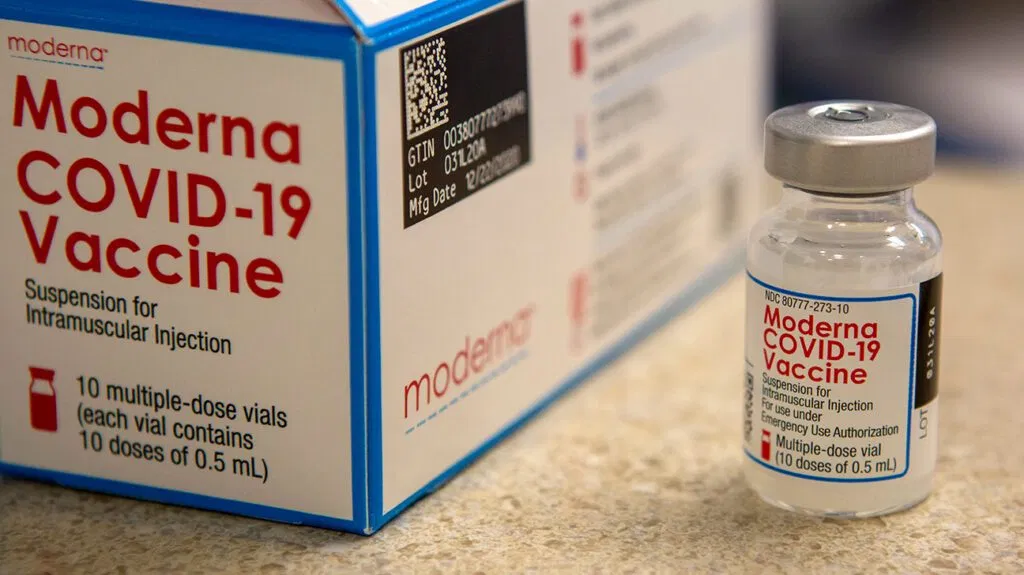Moderna Booster Side Effects
Moderna Booster Side Effects: Healthcare professionals have been talking in recent months about the need for a transition. Moderna Booster Side Effects: The US Food and Drug Administration (FDA) and the Centers for Disease Control and Prevention (CDC) recently approved Pfizer’s revaccination for some high-risk groups for serious covid.
This booster dose is only given to people who have received the first two doses of Pfizer. Moderna recipients will have to wait for the approval of additional doses for a particular vaccine, he said, and the vaccine will arrive “very soon.”
But if you have Moderna and are waiting in line, you can continue to prepare for the next, thanks to a new CDC study documenting the potential Side effects of Moderna boosters.
September. September 12 and 19. The secure program allows people to report vaccine responses via their smartphone, and more than 10,400 people have documented their experience after three doses of Moderna.
Moderna Booster Side Effects – From CDC Reports
According to CDC reports, the side effects of a Moderna booster are:
- More than 80% of people who receive the third dose of this vaccine report at least one local reaction at the injection site.
- The most common local reaction was injection site pain, which occurred in 75.9%.
- Additional local reactions included
- Edema in 33.6%,
- Save 25.2%
- Itching at 20%. More than 75% of the beneficiaries of the third Moderna provided at least one systematic answer.
- Fatigue was the most common systemic adverse reaction (61.8%).
Other reactions are
- Muscle pain is 49.8%,
- Headache 49%
- short 36.4%,
- Joint pain is 33%,
- Cold 31.3%,
- Braking 18.8%,
- Diarrhea 9%,
- Abdominal pain 8.4%
- Yield 2.3%.
- Breakthrough rate and up to 2.2 percent.
In terms of health effects, 35.2% of those who received Moderna injections said they could not perform their normal daily activities afterward, and 13.7% said they could not go to work or school after using them. However, the researchers said this was expected and consistent with responses after the first two modal doses. Local reactions were less frequently reported after the third dose than after the second dose, while systemic reactions were less frequently reported after the next injection.

Moderna Booster Side Effects – CDC Comment
The CDC states: “The patterns of adverse reactions observed after the third dose of Moderna are consistent with those previously described after the second dose.”
Reports have shown that there are more reactions after the third dose of Moderna than after a booster dose of Pfizer. Only about 70% of Pfizer experienced at least one injection site reaction after the third dose and only 65% reported at least one systemic reaction. This was no different from what happened after the first two doses. An April study published in JAMA Insights found that people vaccinated with Moderna experienced more side effects from primary and secondary vaccines compared to those vaccinated with Pfizer.
A possible difference is the amount of mRNA present in each vaccine. Moderna is 100 micrograms, while Pfizer is 30 micrograms. This means that the likelihood of side effects may vary depending on what is approved by the FDA for Moderna boosters. [Source]

Moderna Booster Side Effects – FDA Testing
The FDA is known to consider allowing a small half dose of 50 micrograms instead of a full half dose of 100 micrograms for the extra dose, which can lead to fewer people noticing the reaction. The Centers for Disease Control and Prevention named the most common side effects people may experience after receiving a booster dose of Pfizer or Moderna with a double dose of Covid as the second dose of Johnson & Johnson. vaccine dose.
The data provided by the Agency’s Advisory Board on Vaccination Procedures are based on data from the Agency’s secure text messaging system and the Vaccine Adverse Event Reporting System, a national vaccine safety monitoring program.
The advisory group will meet on Thursday to discuss other Moderna and J&J vaccines and whether people can combine the company’s faxes.
The most common side effects reported after the third mRNA vaccination by Moderna and Pfizer were injection site pain, fatigue, muscle pain, headache, and fever, followed by colds and disgusting CDC data. low. The data showed that the rate of side effects was comparable to the rate of side effects after the second dose of the mRNA vaccine. Although data available at J&J are more limited, officials report fever, headache, and headache after two doses of the vaccine.
